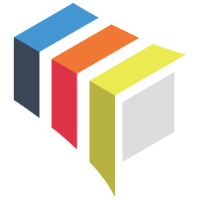QUESTIONS? CALL:
+1 (833) BOODSKAp
Smart Waste Management with Boodskap's IoT Platform
PRODUCT DESCRIPTION
- Smart waste management using IoT technology revolutionizes how cities handle waste collection and disposal. By leveraging IoT-enabled devices and sensors, municipalities can achieve real-time visibility and control over waste levels, optimize collection routes, and improve overall efficiency. This advanced approach reduces operational costs, minimizes environmental impact, and enhances urban cleanliness. Boodskap's IoT Platform as a Service (PaaS) offers comprehensive solutions for smart waste management, integrating various sensors and devices to deliver actionable insights and predictive analytics.
- Boodskap’s IoT platform enables city planners and waste management authorities to collect, analyze, and act on data from various IoT sensors. The platform’s robust data analytics and visualization tools provide real-time monitoring of waste levels in bins and containers, enabling optimized collection schedules and routes.
- Smart Bins: Waste bins equipped with sensors to monitor fill levels and compact waste.
- Waste Collection Vehicles: Trucks equipped with GPS and route optimization systems.
- Gateway Devices: Facilitate communication between waste sensors and the central control system.
- Fill Level Sensors: Measure the fill levels of waste bins to determine when they need to be emptied.
- Weight Sensors: Measure the weight of waste to monitor bin capacity and optimize collection.
- GPS Sensors: Track the location of waste collection vehicles for route optimization.
- Gas Sensors: Detect harmful gases emitted from waste to ensure safe handling and disposal.
- LoRaWAN: Provides long-range connectivity for waste sensors deployed across large urban areas.
- NB-IoT: Ensures reliable communication for low-power waste monitoring devices.
- Zigbee: Ideal for creating a mesh network of waste sensors within the city.
- MQTT (Message Queuing Telemetry Transport): Lightweight messaging protocol used for real-time data transmission between waste sensors and the IoT platform.
- A city using Boodskap’s IoT platform installs fill level sensors and weight sensors in smart bins placed throughout the city. Waste collection vehicles are equipped with GPS sensors to enable route optimization. All collected data is transmitted to the Boodskap platform via LoRaWAN and NB-IoT. The platform analyzes the data, providing insights into waste levels, bin usage patterns, and optimized collection routes. City planners and waste management authorities can view these insights on a dashboard, enabling them to make timely decisions on waste collection schedules and routes. This leads to reduced operational costs, minimized environmental impact, and improved urban cleanliness.
- Real-time monitoring and route optimization reduce fuel consumption and operational costs.
- Optimized waste collection minimizes the environmental footprint and enhances urban cleanliness.
- Efficient waste management processes lead to significant cost savings.
- Timely waste collection and reduced overflow enhance the cleanliness and hygiene of urban areas. By leveraging Boodskap’s IoT platform, cities can significantly enhance their waste management processes, leading to improved operational efficiency, reduced environmental impact, and cost savings.

